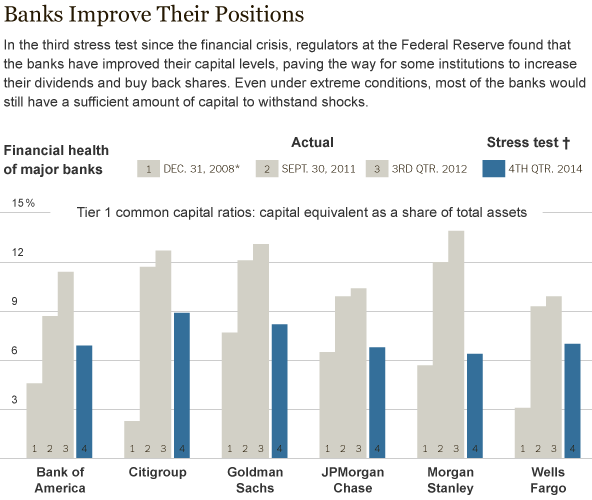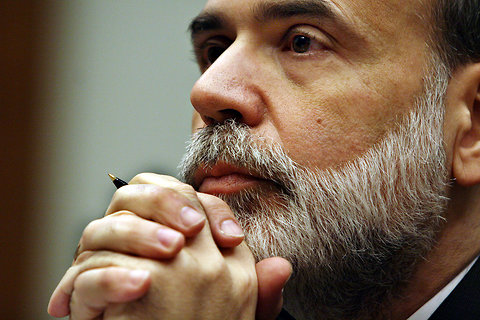Stock and bond markets around the world jumped on Monday, after Lawrence H. Summers withdrew from consideration as chairman of the Federal Reserve.
The equity surge began in Asia a few hours after Mr. Summers wrote President Obama that “any possible confirmation process for me would be acrimonious” and thus not in the nation’s best interests.
The rally rolled across Europe and gained steam on Wall Street, where the Dow Jones industrial average surged by 1 percent, before pulling back modestly. It closed at 15,495, up nearly 0.8 percent, or about 119 points. The broad-based Standard Poor’s 500-stock index was up 0.6 percent for the day.
Mr. Summers’s unexpected move on Sunday came shortly before the American central bank meets to decide whether to scale back its bond purchases, or quantitative easing, from the current pace of $85 billion a month.
The decision left many analysts’ short list for leading candidates for the Fed leadership down to just Janet L. Yellen, the current No. 2 under the chairman, Ben S. Bernanke, whose term expires in January.
Ms. Yellen was perceived by some in the financial markets as likely to maintain the current course, rather than move quickly to scale back the Fed’s years-long economic stimulus efforts.
Christian Schulz, an economist in London with Berenberg Bank, said investors’ concerns about Mr. Summers stemmed from the fact that he had not spoken much on the topic of monetary policy, while Ms. Yellen had a long track record of supporting Mr. Bernanke’s policies.
Mr. Summers “seemed less convinced that such a blunt instrument as quantitative easing was the right tool,” Mr. Schulz said. “It was clear he wasn’t as big a fan.”
“It seems likely that President Obama will choose Yellen, which is good in terms of the prospects of the Fed staying on hold for some time,” said Peter Cardillo, chief market economist at Rockwell Global Capital in New York, according to Reuters.
“Of course, there are always chances that the Fed may begin to announce the trimming on Wednesday, but that’s already been baked in the market,” Mr. Cardillo said.
Mohamed El-Erian, the chief executive of the investment firm Pimco, said in a blog post that the Summers move would be seen “as bullish for U.S. interest rate curve trades, duration more generally, and risk assets (including credit and equities).”
The main Hong Kong stock index pushed ahead 1.5 percent, while Germany’s DAX reached a new high, gaining 1.1 percent.
But emerging markets were the most relieved by Mr. Summers’s retreat. Equity indexes in Indonesia (up 3.4 percent), the Philippines (2.8 percent), Argentina (2.1 percent) and Singapore (1.9 percent) were among the sharpest gainers.
Their rallies underscored the widespread belief that the “Bernanke bubbles” have helped bolster the emerging markets. Fears that the cheap money would dry up have prompted turmoil in recent weeks.
Still, many Fed watchers believed the policy differences between Ms. Yellen and Mr. Summers were not substantive. Both would be concerned about the sustained levels of high unemployment and likely to tap the brakes on stimulus slowly. In that sense, the market euphoria Monday was surprising to some.
The United States currency fell marginally against other major currencies, with the euro gaining 0.33 percent against the dollar, to $1.3338, and the dollar falling against its Japanese counterpart to 99.10 yen.
Analysts at BNP Paribas wrote that there had been a “knee-jerk sell-off” of the dollar on the Summers news, but that it would not last. By far, they said, the most important factor in the currency market was the Fed’s policy announcement on Wednesday.

David Jolly contributed reporting from Paris.
Article source: http://www.nytimes.com/2013/09/17/business/daily-stock-market-activity.html?partner=rss&emc=rss




 Updating…
Updating…